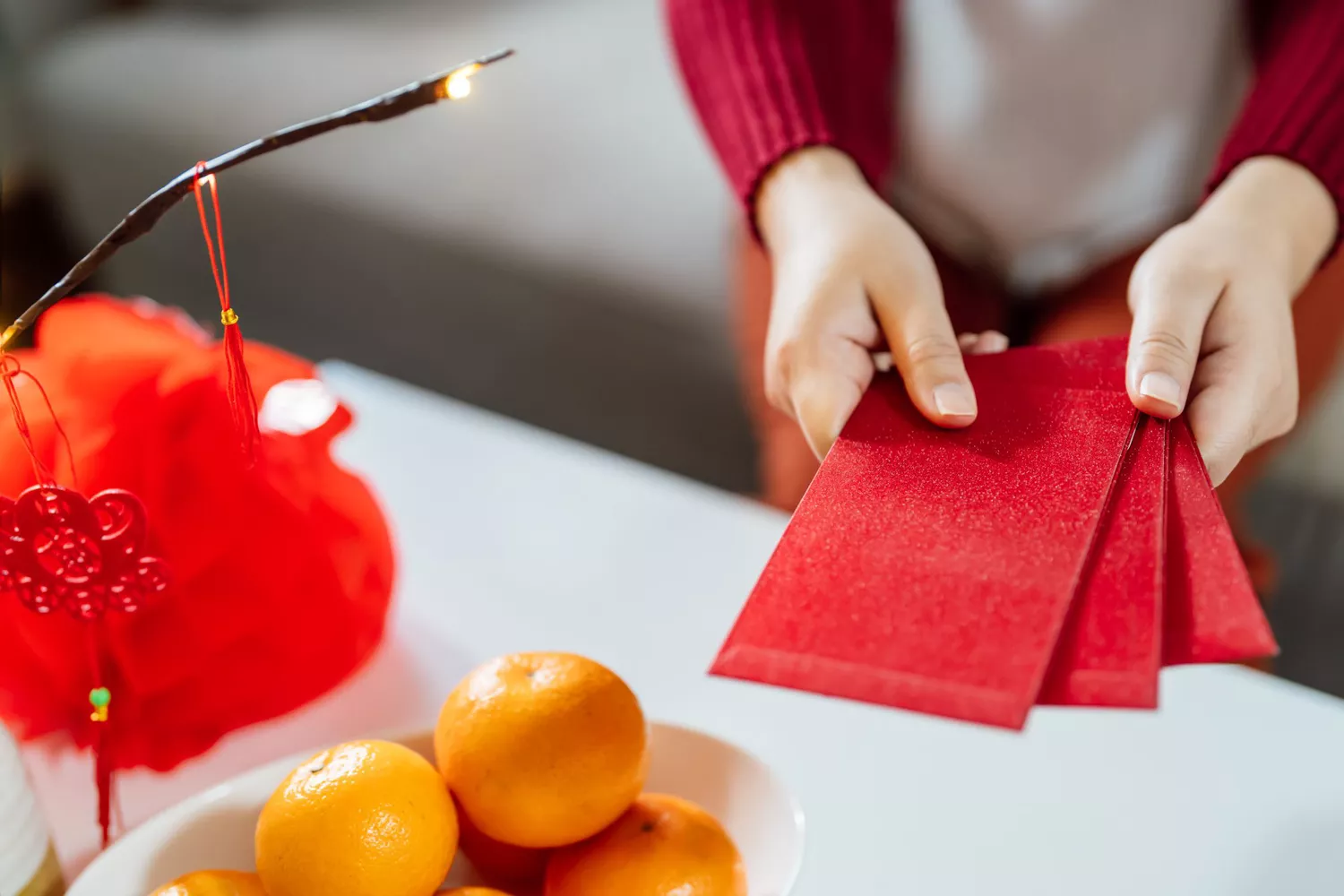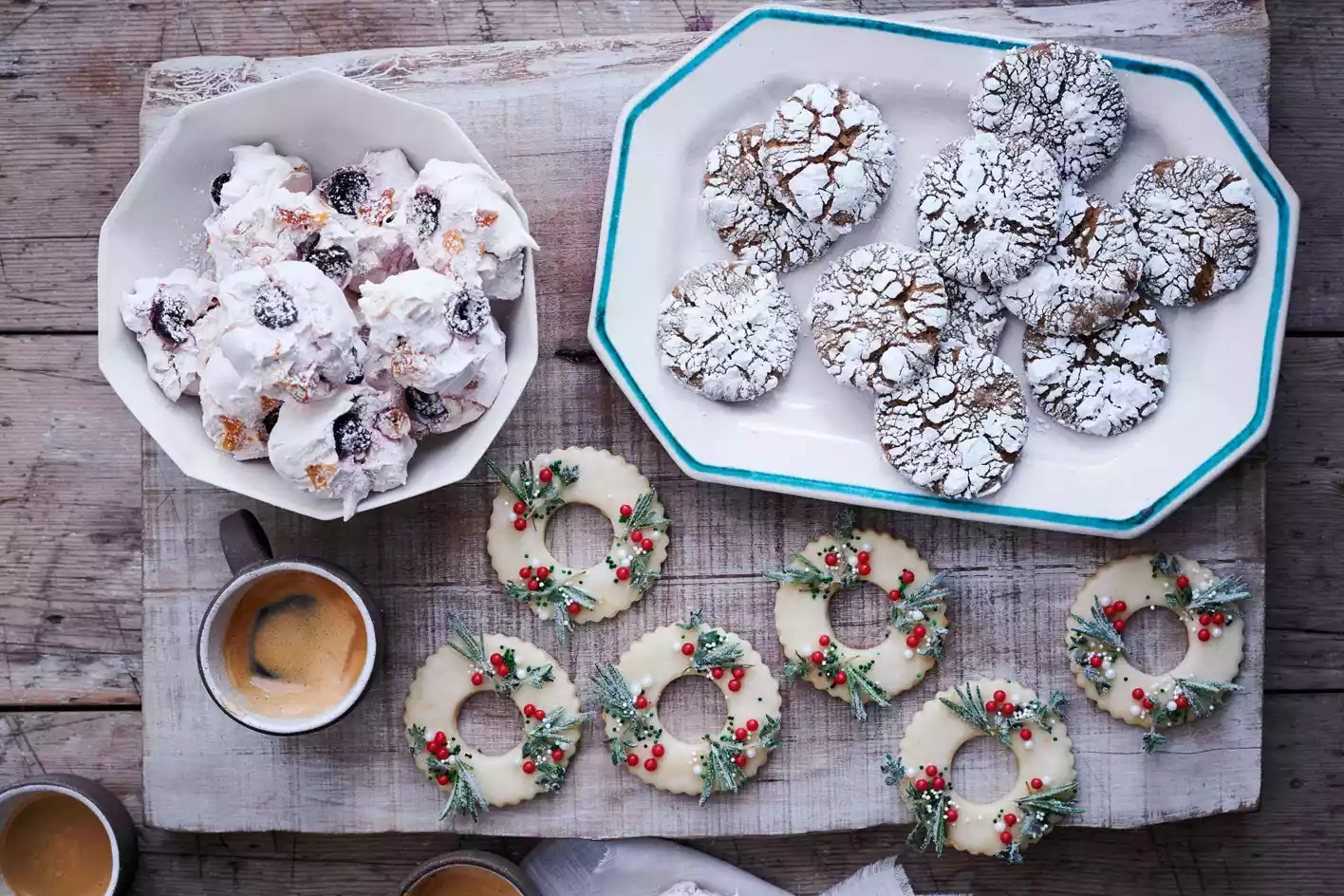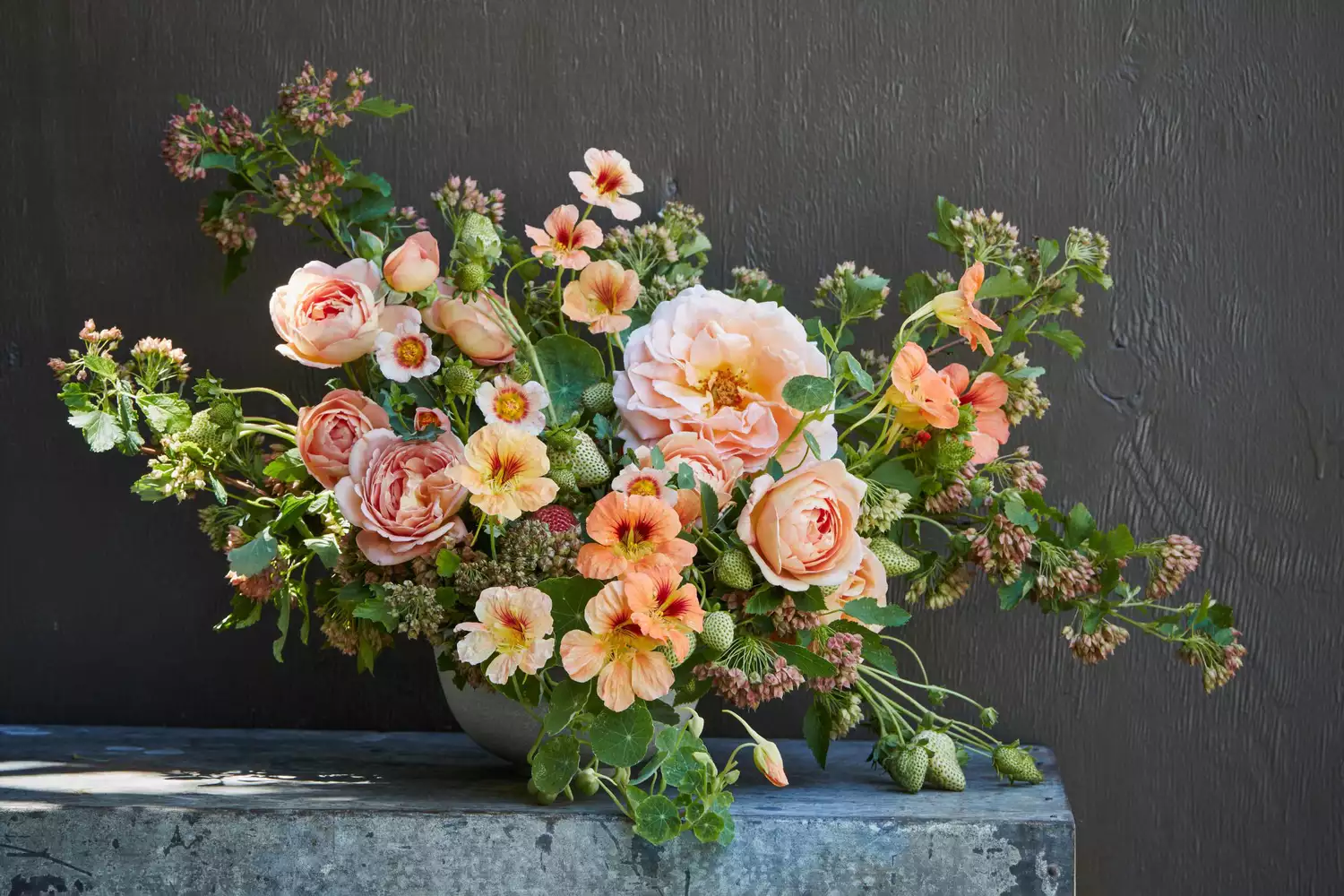
The Lunar New Year, likewise referred to as Chinese New Year, happens this weekend, on January 22, 2023– however in families worldwide, preparations have actually currently begun. In addition to the big, luxurious meal that’s held the evening before, people in China and throughout Asia embrace customs in the lead-up to the vacation (and for the two weeks after) to usher in good luck and renewal during the new year; they prepare and embellish their homes, exchange gifts, and share symbolic foods. These are all excellent ways to bid farewell to 2022, the year of the strong, brave tiger, and welcome the year of the mild, adorable rabbit– along with support Chinatowns and Asian American and Pacific Islander (AAPI)- owned businesses regional to you.
To find out more about Lunar New Year customs and what they symbolize, we reached out to Grace Young (@stirfryguru on Instagram), a Chinese American cookbook author, Chinatown activist, and food historian specializing in Chinese cuisine. She won the 2022 James Beard Humanitarian of the Year Award for her work to conserve America’s Chinatowns in the middle of AAPI hate during the COVID-19 pandemic.
” Lunar New Year is a time for renewal and reunion,” Young says, explaining that this holiday is like a combination of Thanksgiving and Easter. No matter what your year was before, the new year is an opportunity to begin fresh.”.
That is, as long as you prepare yourself exactly according to tradition. “It’s extremely crucial to do specific things and consume certain foods to ensure your true blessings and good fortune,” Young states. Here are five (particular!) things you can do to bid farewell to the Year of the Tiger and begin the Year of the Rabbit on the best foot– plus, what you should not do throughout the very first 2 weeks of the Lunar New Year.
1. Make a Lunar New Year Centerpiece With Lucky Money.
” The first thing everyone does is create a focal point of oranges and tangerines,” states Young. If you’re extremely standard, you add one pomelo.”.
The latter, a gumdrop-shaped fruit that’s larger and sweeter than a grapefruit, might be harder to come by, especially if you do not live near a Chinatown, but include one if you can; its scent wards off bad luck. Set up the citrus in a bowl, then embed the ending up touch– a small rectangle-shaped red envelope with money inside.
The envelope is called hong bao, and includes li xi, or “lucky cash.” It could be a quarter, a dollar, or more. Adults give children hong bao for celebrations like birthdays, too, since it signifies good wishes for the coming year. The red envelopes can be plain or extremely decorated, and they’re easy to discover online. Young advises Grand Tea and Imports for its large choice of red envelopes, consisting of ones printed with auspicious Chinese characters and this year’s zodiac sign– the rabbit.
When you check out buddies or loved ones during the 2 weeks after Lunar New Year, pay the tradition forward and bring them a bag of oranges, two tangerines, and li xi.
2. Embellish With Flowers.
It’s important to embellish your home with fresh flowers, states Young (” My moms and dads constantly purchased cherry blossom branches on New Year’s Eve,” she explains). The hope is that they’ll flower on New Year’s Day to bring good luck. Try potted azaleas, amaryllis, lilies, and narcissus; paperwhites, orchids, mandarin orange trees, and fortunate bamboo are popular. G&J Florist in New York City’s Chinatown has them all– and ships the lucky bamboo.
3. Tidy Up.
Cleaning your house is important– and not just since you’re going to have people over to eat. It has to do with the cooking area god, typically represented by a wooden plaque that is placed in the kitchen area next to the stove, describes Young.
You want to impress him with a tidy house, bribe him with presents of sweet oranges and tangerines to sweeten his words, and get him intoxicated on rice white wine (to slur his words so the Jade Emperor can not understand anything bad in his report), which will guarantee true blessings for the brand-new year. “It’s a really lively custom,” states Young. Grand Tea and Imports carries a kitchen area god plaque, too.
4. Make a Lunar New Year’s Eve Feast.
It’s “the most bountiful meal of the whole year,” states Young, with glamorous foods from land and sea. It’s generally kept in the night of New Year’s Eve– however it’s extremely important to save some food for New Year’s Day.
Shrimp.
Many households serve a shrimp dish, says Young. It’s typically a stir-fry, like kung-pao shrimp or salt and pepper shrimp (although the cooking strategy does not actually matter). The Cantonese word for shrimp seems like laughing (” ha”), so shrimp is stated to bring pleasure to your life.
Poultry.
” Chicken symbolizes the wholeness of life in the world,” states Young. “Serving a whole chicken signifies a correct end of the old year and the start of the new one. There need to be a chicken– or duck, if your family prefers it.” Soy sauce chicken and poached chicken with ginger and scallions sauce are classic favorites.
Shellfish.
Scallop or clam shells look like ancient Chinese coins, so they represent wealth and success. To ensure your brand-new year is profitable, a dish like clams with black bean sauce or a stir-fry of scallops with ginger and snow peas can be part of the meal.
The Cantonese word for oyster, meanwhile, sounds like the words for “good things,” so it’s meaningful to serve them, too. “When you consume oysters, good ideas enter your life,” says Young. Her family liked to make a stir-fry with minced oysters, shiitake mushrooms, Chinese sausage, carrots, celery, ground pork, and water chestnuts served in lettuce leaves.
Lobster, however, is the most substantial shellfish to serve. “It holds the life and energy of the dragon,” states Young, one of the most powerful symbols in Chinese culture. “The dragon is the symbol for emperor– supreme power.” Some families make a basic stir-fry of lobster with scallions and ginger.
Pork.
One especially fun Chinese New Year’s Eve custom is hosting a jiaozi, or dumpling-making party. A common filling consists of minced pork, scallions, cabbage, ginger, and garlic. A coin is folded into one dumpling; whoever gets it will be extra fortunate in the coming year.
Like lobster, roast pig is highly symbolic, and it’s crucial that its skin be crispy and crackling. “The pig itself signifies bounty, and the crispy skin represents filtration,” says Young. Sweet and sour pork (or chicken) is another popular meal, since the word for sour represents a grandchild or a growing household, she states.
Vegetables.
Lettuce and shiitake mushrooms take on lucky meaning. The Cantonese word for lettuce sounds like another that indicates “growing wealth,” says Young; mushrooms grow quickly, so they’re a metaphor for growing fortune. “In my household, it’s extremely typical to do a stir-fry of lettuce with garlic, a little fresh jalapeño, and rice wine– or a stir-fry of mushrooms and sugar snap peas,” she includes.
Fish.
The last and crucial dish at any Lunar New Year banquet is the whole fish. “It doesn’t matter if it’s steamed, pan fried, deep-fried, or poached– you just have to have a whole fish served with the head and tail undamaged,” says Young. “It represents a beneficial beginning and end to the new year.” The word for fish is also a homonym for abundance, and due to the fact that fish swim in sets, the dish represents marital happiness. The kind of fish likewise isn’t specified, but branzino, trout, red snapper, or sea bass are common choices. Young’s household likes to poach or steam the fish and serve it with scallions and ginger oil.
Just as essential as the entire fish? Leftovers. “The fish is the course that’s served last, and you don’t complete it,” says Young. “Finishing it on the next day, New Year’s Day, symbolizes bringing abundance from the previous year into the new year.”.
Noodles.
Any type of long noodles signify longevity, so you’ll often discover them on the table.
5. Consume Lunar New Year’s Day Sweets.
In addition to remaining delicacies from the night prior to, New Year’s Day is filled with sugary foods. Due to the fact that they’re complicated to make, they’re typically purchased from a bakeshop. An advice: Secure these sugary foods, specifically nian gao, beforehand.
Nian Gao.
The traditional new year’s cake is made of glutinous rice flour, a Chinese sugar offered in pieces called brown sweet, and water. It’s a round, flat, and hard cake that “symbolizes the roundness of life and the cohesiveness of household,” says Young. In the house on New Year’s Day early morning, it’s sufficed into 1/4-inch-thick pieces, dipped in beaten egg, and pan-fried in a little vegetable oil. “It’s the taste of the brand-new year, truly,” states Young. “Once fried, the sweet caramel-flavored slices have a mochi-like texture that is so excellent. “.
This year, Young will purchase her nian gao at a Malaysian bakery in New York City’s Chinatown called Kuih Cafe. The owner, Veronica Gan, makes a “gorgeous” version covered in banana leaves with French-style caramel rather of the Chinese brown sweet– and she produces only 30 a day, they’re so labor extensive. If you wish to nab one, make sure to inspect the hours and schedule; it’s open only on Friday and Saturday afternoons (today, January 20, and tomorrow, January 21), and its cakes will sell out quickly.
Jian Dui.
Fried sesame balls with red bean paste filling are another standard sweet you’ll discover at Chinese bakeshops this time of year (and at lots of all year long). They’re crispy and cozy on the outside and chewy on the within, with a dollop of earthy-sweet red bean filling. New Golden Fung Wong– the earliest pastry shop in New York City’s Chinatown– is understood for its sesame balls and standard nian gao.
What Not to Do for Lunar New Year.
A few specific things are thought about unlucky at Chinese New Year and during the 2 weeks after, says Young.
Don’t Cook.
The Buddhist custom is that no fish, chicken, or animals are eliminated on the first day of the brand-new year. “This is a time for purification, and in order to get the correct true blessings, no blood must be shed for food,” discusses Young. In addition to nian gao, sesame balls, and leftovers from the previous night, a Buddhist vegetarian dish called Buddhist Delight is generally eaten on New Year’s Day.
Don’t Clean.
” The last thing you would do is sweep or vacuum,” says Young. “You do not wish to sweep away your good luck!”.
Do Not Use Knives or Scissors.
” Cutting anything is symbolic of cutting off your great fortune,” states Young. It used to be more stringent– people would not get their hair cut for the first two weeks of the new year.
Do Not Pay Bills.
Pay all your bills before the end of the year. You do not wish to pay anything on New Year’s Day, or you’ll be paying all year.
Do not Argue.
Refrain from entering into an argument with, well, anybody. “It’s very crucial to have a favorable outlook, particularly for the first 2 weeks of the year,” says Young.



